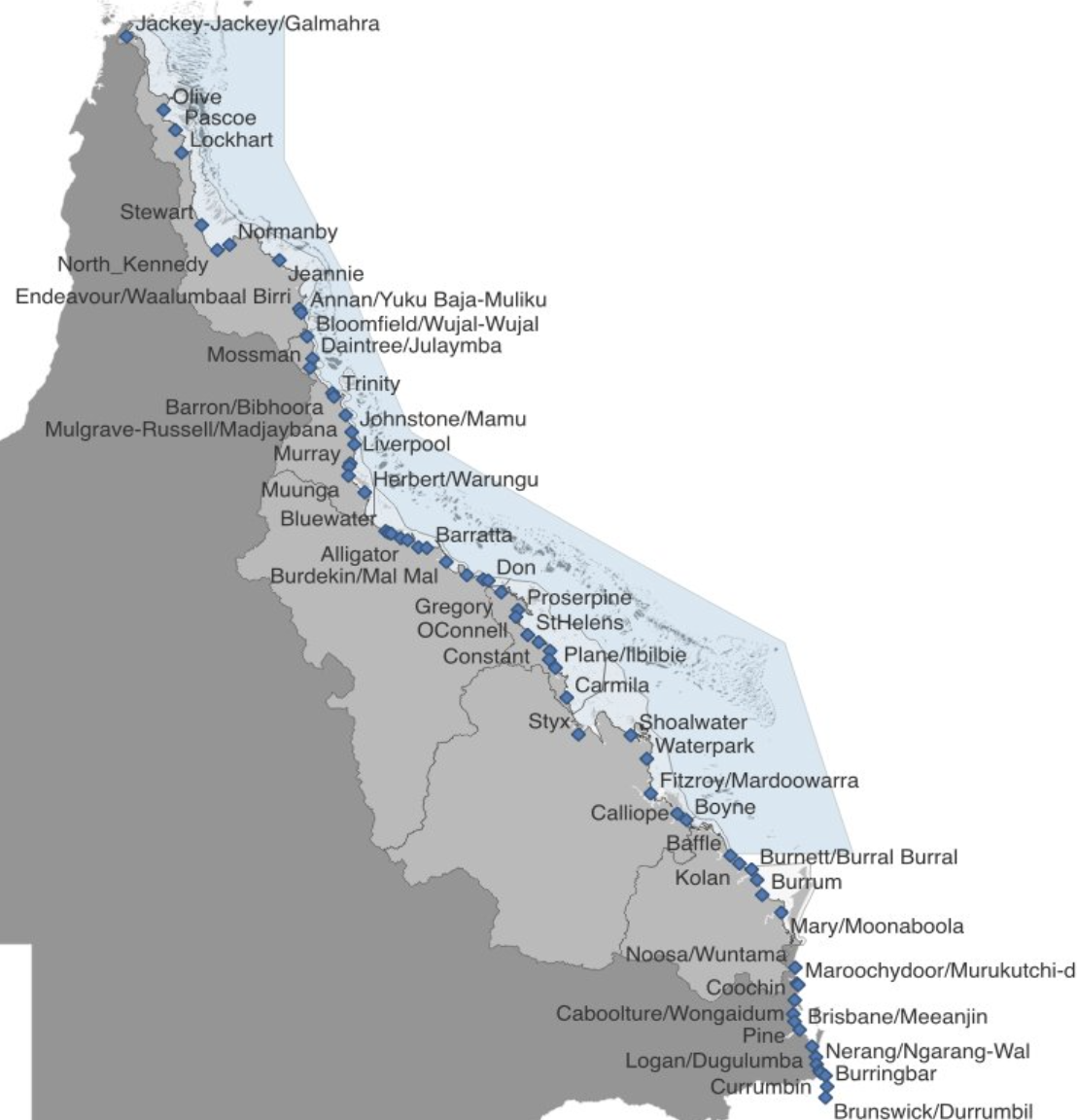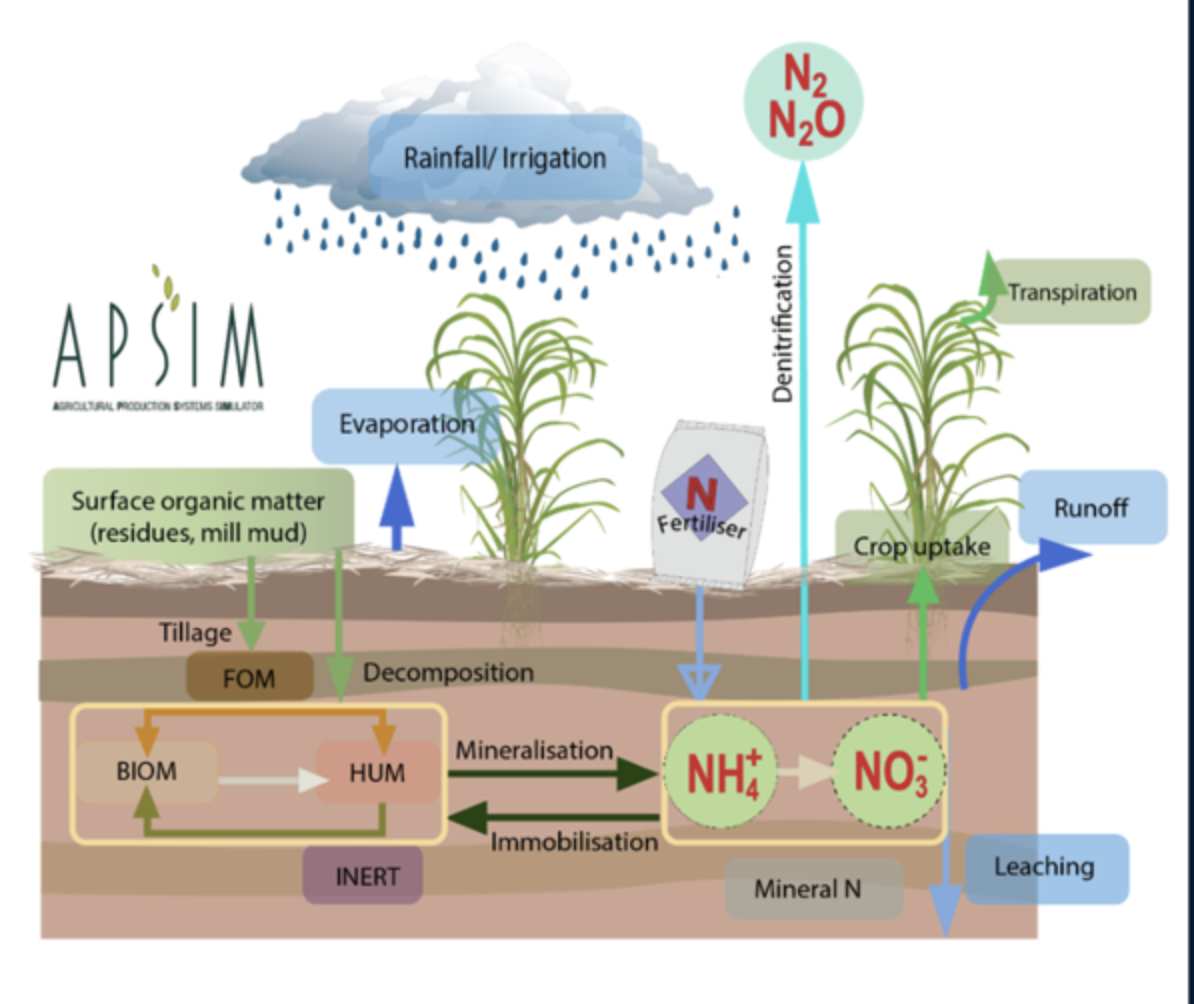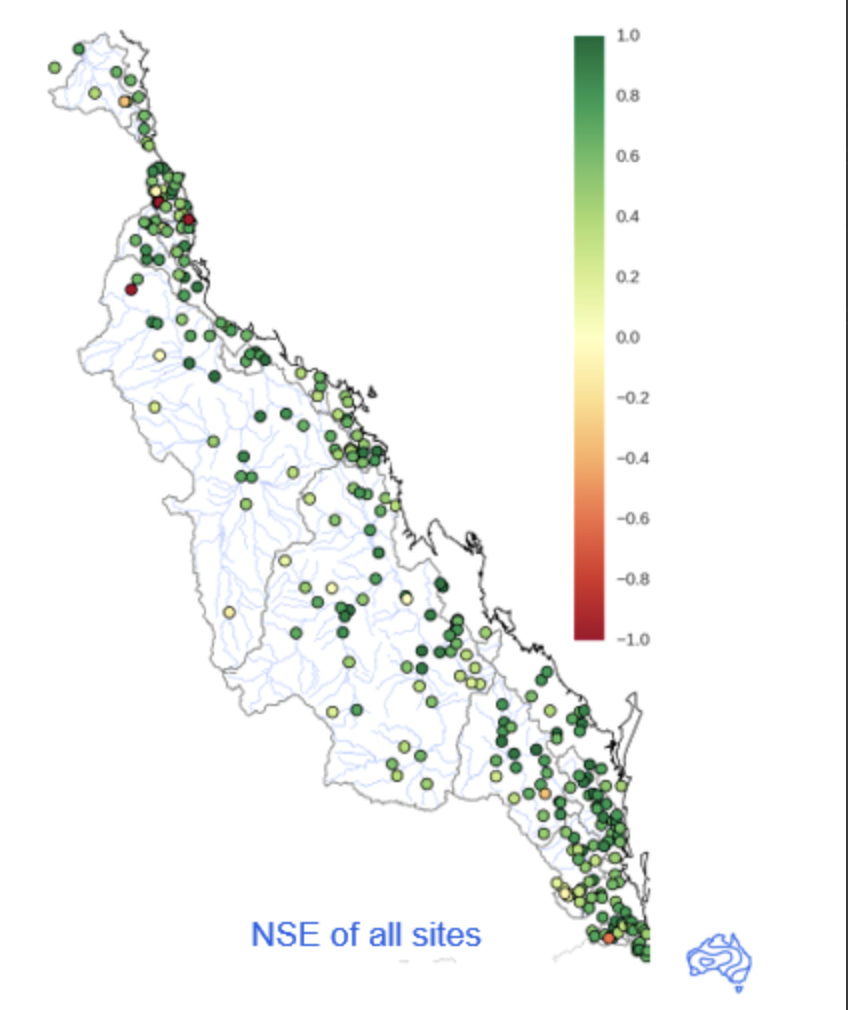The eReefs modelling framework uses river flow rates and nutrient loads from the BOM G2G and Queensland government Paddock to Reef Catchment models.

Paddock to Reef Catchment model
This model simulates the movement of water, sediment, nutrients (like nitrogen and phosphorus), and pesticides from agricultural and other land uses in catchments draining into the GBR lagoon. It integrates paddock outputs and simulate river and floodplain transport.
The Paddock to Reef Catchment Model feeds into eReefs by: Providing Pollutant Loads – It supplies estimates of sediment, nutrients, and pesticide loads from different catchments. Hydrological Inputs – The model outputs river flow and pollutant transport, which serve as boundary conditions for eReefs hydrodynamic models. Scenario Testing – eReefs can use catchment model outputs to test how land management changes impact water quality at a regional scale. By linking the Paddock to Reef Catchment Model with eReefs, scientists and policymakers can better understand how land-based activities influence the GBR’s water quality, guiding efforts to reduce pollution and improve reef health.

G2G hydrology model
G2G is a distributed, grid-based hydrological model used to predict river flows across regional, national and continental scales at both gauged and ungauged locations. G2G provides river flow accross the GBR for the 2010 -2022 time period.
